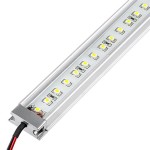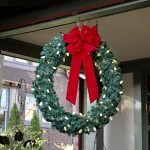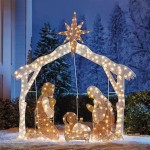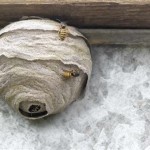Replacement Glass for Outdoor Lights: A Comprehensive Guide
Outdoor lighting enhances the aesthetic appeal of properties, provides security, and facilitates safe navigation around walkways, patios, and gardens after dark. A critical component of many outdoor light fixtures is the glass or lens that protects the bulb and diffuses its light. Over time, this glass can become damaged due to weather, accidental impact, or simple wear and tear. When this occurs, replacing the glass is often a more cost-effective and practical solution than replacing the entire fixture. This article will explore the various aspects of replacement glass for outdoor lights, including types, selection criteria, installation procedures, and maintenance tips.
Understanding the Different Types of Replacement Glass
The diversity of outdoor light fixtures necessitates a corresponding variety in replacement glass types. The most common types include clear glass, frosted glass, seeded glass, and colored glass, each possessing unique characteristics and applications.
Clear Glass: Clear glass offers maximum light transmission, allowing the full intensity of the bulb to shine through. It is ideal for areas where bright, direct illumination is required, such as security lighting or illuminating pathways. Clear glass replacement options are typically made from standard soda-lime glass, borosilicate glass (for higher heat resistance), or acrylic. Acrylic is often favored in situations vulnerable to impact due to its shatter-resistant properties.
Frosted Glass: Frosted glass diffuses light, creating a softer, more even glow and reducing glare. It is achieved by etching the surface of the glass, either chemically or mechanically. This type of glass is well-suited for ambient lighting applications, such as porch lights or patio fixtures, where a comfortable and inviting atmosphere is desired. Frosted glass is available in varying degrees of opacity, allowing control over the amount of light diffusion. Some fixtures utilize a frosted coating on the inside of the glass for easier cleaning of the exterior surface.
Seeded Glass: Seeded glass features small bubbles intentionally incorporated throughout the material. These bubbles scatter the light in a unique and visually appealing way, adding character and a vintage aesthetic to the fixture. Seeded glass is often used in decorative outdoor lighting applications, like lanterns and wall sconces, where visual interest is prioritized. The bubble pattern can vary, from dense and uniform to sparse and irregular, impacting the final lighting aesthetic.
Colored Glass: Colored glass adds a decorative element to outdoor lighting, providing the ability to change the hue of the emitted light. This type of glass can be created by adding metallic oxides to the glass batch during manufacturing. Common colors include amber, green, and red, each offering a distinct ambiance. Colored glass might be employed for holiday lighting, garden features, or to complement the architectural style of the property. The intensity of the color depends on the concentration of the added metallic oxides.
Beyond these basic types, textured glass and patterned glass are also available. Textured glass features a raised or embossed surface, creating subtle light patterns and adding tactile interest. Patterned glass incorporates specific designs or motifs, further enhancing the decorative appeal of the fixture. The choice of glass type is contingent upon the desired lighting effect, the style of the fixture, and the intended application.
Key Considerations When Selecting Replacement Glass
Selecting the appropriate replacement glass involves careful consideration of several factors to ensure proper fit, functionality, and aesthetics. These include accurate measurements, glass thickness, material compatibility, and adherence to safety standards.
Accurate Measurements: Precise measurements are crucial for a successful glass replacement. The dimensions of the original glass must be replicated accurately, including the diameter, height, and any specific cutouts or mounting features. Using a caliper or ruler to measure the existing glass, or the opening in the fixture, will provide the necessary data. It is advisable to measure multiple times to ensure accuracy and to account for any minor variations. Failure to obtain accurate measurements will likely result in a glass piece that does not fit properly, compromising the fixture's integrity and functionality.
Glass Thickness: The thickness of the replacement glass is also an important consideration. The original glass likely had a specific thickness to provide adequate structural support and weather resistance. Using a glass piece that is too thin may result in breakage, while one that is too thick may not fit into the fixture properly. Matching the thickness of the original glass as closely as possible is recommended. If the original thickness is unknown, consulting the fixture's specifications or seeking advice from a lighting professional is prudent.
Material Compatibility: The material of the replacement glass should be compatible with the environment and the fixture itself. Outdoor lighting is exposed to diverse weather conditions, including temperature fluctuations, moisture, and ultraviolet radiation. Selecting a glass material that can withstand these conditions is essential. Borosilicate glass, for example, is more resistant to thermal shock than standard soda-lime glass and is suitable for fixtures that generate a significant amount of heat. Acrylic offers excellent impact resistance and UV stability, making it a good choice for areas prone to vandalism or accidental damage. Furthermore, ensure that the glass material will not react negatively with the fixture's frame or any sealants used during installation.
Safety Standards: Adherence to relevant safety standards is paramount when selecting replacement glass, particularly for outdoor lighting. The glass should be tempered or laminated if it is located in an area where it could pose a hazard if broken. Tempered glass shatters into small, blunt pieces, reducing the risk of injury. Laminated glass consists of two or more layers of glass bonded together with an interlayer, which holds the glass fragments in place if broken. Checking local building codes and regulations regarding glass safety is recommended before selecting a replacement.
In addition to these factors, consider the aesthetic aspect of the replacement glass. Match the style and finish of the original glass as closely as possible to maintain the overall appearance of the fixture and the property. If the original glass is no longer available, selecting a replacement that complements the fixture's design is a viable alternative.
Step-by-Step Guide to Replacing Outdoor Light Glass
Replacing outdoor light glass is a relatively straightforward process that can be accomplished with basic tools and a methodical approach. Safety precautions are paramount, and it is essential to disconnect the power supply before commencing the repair. The following steps outline the typical procedure for replacing outdoor light glass:
Step 1: Disconnect the Power Supply: Prior to touching any electrical components, turn off the power to the fixture at the circuit breaker. Verify that the power is off by using a non-contact voltage tester. This step is crucial to prevent electrical shock.
Step 2: Remove the Old Glass: Carefully remove any retaining screws, clips, or fasteners that hold the old glass in place. If the glass is broken, wear gloves to protect your hands from sharp edges. Gently remove the broken glass pieces, being mindful of any small shards that may be present. If the glass is sealed with caulk or adhesive, use a utility knife to carefully cut around the edges to release it.
Step 3: Clean the Fixture: Thoroughly clean the fixture frame to remove any debris, old caulk, or adhesive residue. Use a wire brush or scraper to remove stubborn deposits. Clean the surface with a suitable cleaner, such as rubbing alcohol, to ensure proper adhesion of any new sealant. A clean surface will ensure a secure and weather-tight seal for the new glass.
Step 4: Apply Sealant (If Necessary): If the original glass was sealed with caulk or adhesive, apply a thin, even bead of silicone caulk or outdoor-grade adhesive to the fixture frame where the new glass will sit. The sealant will provide a weather-tight seal and prevent water from entering the fixture. Follow the manufacturer's instructions for the sealant application and curing time.
Step 5: Install the New Glass: Carefully position the new glass into the fixture frame, ensuring it is properly aligned and seated. Press firmly to ensure good contact with the sealant (if used). Secure the glass in place using the original retaining screws, clips, or fasteners. Tighten the fasteners until they are snug, but avoid over-tightening, which could crack the glass.
Step 6: Restore Power and Test: Once the glass is securely installed, restore power to the fixture at the circuit breaker. Test the light to ensure it is functioning properly. If the light does not turn on, check the bulb and wiring connections. If the issue persists, consult a qualified electrician.
Step 7: Clean Up: Dispose of the old glass properly, following local regulations for glass disposal. Clean up any debris or sealant residue from the work area. Inspect the fixture for any remaining loose glass shards or potential hazards.
This process may vary slightly depending on the specific type of fixture and the method of glass retention. Always consult the manufacturer's instructions for guidance on replacing the glass in a particular fixture.
Regular maintenance of outdoor lighting fixtures can extend the lifespan of the glass and prevent premature damage. Periodically cleaning the glass with a mild detergent and water will remove dirt, grime, and insect debris, maintaining optimal light output. Inspecting the fixture regularly for signs of damage, such as cracks or chips, will allow for timely repairs and prevent further deterioration. Applying a sealant around the glass edges can help prevent water infiltration and corrosion.

Replacement Globes Mel Northey Co Inc

Replacement Glass For Oval Bulkhead Light Br400 Br435

Replacement Glass Lens For Orbit 1020 And 1021 Series Well Lights

Replacement 4 Tier Pagoda Frosted Glass Jar

Replacement 3 Tier Pagoda Clear Glass Jar

Parker Outdoor Wall Light Replacement Glass Medium Parts

Parker Outdoor Replacement Glass Hanging Light Or Post Parts

Outdoor Light Glass Replacement Needed Doityourself Com Community Forums

Maine Replacement Glassware Shades Lighting Wall Exterior Outdoor

Utah Shades Replacement Glassware Lighting Wall Exterior Outdoor
Related Posts







